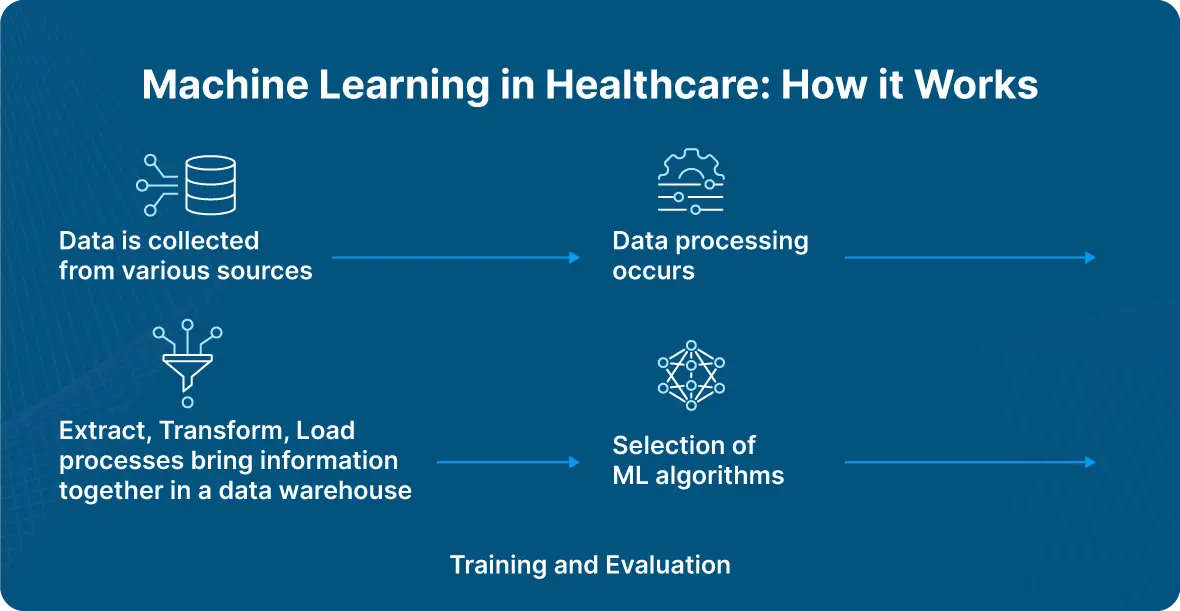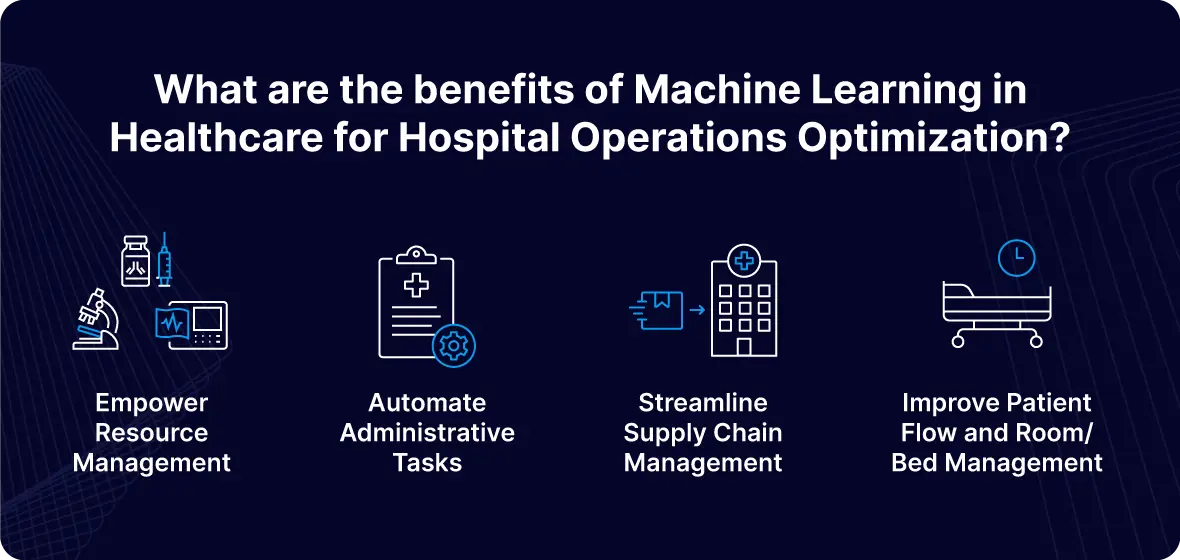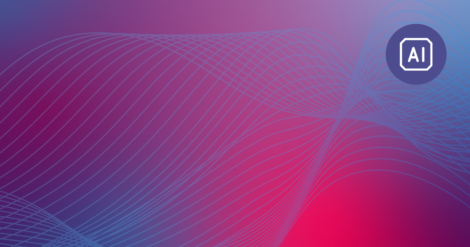Real-time data and machine learning are revolutionizing how hospitals operate and deliver care. By adopting a data-driven approach to hospital optimization, healthcare professionals’ jobs become more efficient, allowing them to focus more on what truly matters: Patient health. Not to mention, hospital operation optimization reduces costs.
Here’s everything you need to know about how hospitals can leverage advancements of machine learning in healthcare to streamline operations and modernize existing systems.
What is Machine Learning in Healthcare?
Machine learning (ML) in healthcare is the transformative use of advanced algorithms and models to analyze and interpret massive amounts of data. Here’s how it works.
The ML process begins with the collection of data from various sources. This includes electronic health records (EHRs), hospital management systems, wearable devices, and IoT sensors. The collected data encompasses everything from patient demographics to admission and discharge records, staffing schedules, equipment usage logs, supply chain information, and real-time vital signs. (You can also leverage real-time data for the purpose of predictive analytics to improve patient outcomes. If you want to learn more about that, check out the blog.)
Once this data is collected, it will undergo preprocessing, which involves cleaning to rectify inaccuracies, normalizing to ensure uniformity, and feature engineering to extract and select relevant features for the ML algorithms.
With ML, comprehensiveness is important — which is why, to provide a comprehensive dataset, real-time data streams are integrated with historical data. This occurs through Extract, Transform, Load (ETL) processes, when information from a myriad of sources is brought together into a unified data warehouse.
Next, your team will select the right ML algorithms based on the specific problem you are looking to address. Common algorithms include supervised learning models like regression and classification for predictive analytics, unsupervised learning models like clustering for grouping similar data points, and reinforcement learning algorithms that learn optimal actions through trial and error.
Finally is training and evaluation. During training, your ML algorithms learn patterns and relationships within your data to make predictions or decisions. With evaluation, you’ll assess the performance of the models against predefined metrics to ensure they meet accuracy and reliability criteria.
What are the Benefits of Machine Learning in Healthcare for Hospital Operations Optimization?
There are a myriad of benefits associated with leveraging machine learning in healthcare for hospital operations optimization. Here are some of the most critical.
- Predictive Analytics Empowers Resource Management: Machine learning models leverage historical and real-time data to predict patient admission rates, emergency room demand, and resource utilization trends. Thanks to this, hospitals are able to optimize staffing levels, bed allocations, and inventory management. This improves operational efficiency and reduces costs.
- Automate Administrative Tasks: Machine learning can streamline administrative tasks such as billing, patient data entry, and scheduling with the help of automation. This reduces the burden of administrative work on healthcare teams, which allows them to focus on patient care. For example, ML algorithms can automate the scheduling of appointments and surgeries.
- Streamline Supply Chain Management: ML models can accurately predict future supply needs with the help of historical usage patterns and real-time inventory levels data. This reduces the risk of stockouts and overstocking, leading to more efficient use of resources and cost savings.
- Improved Patient Flow and Room/Bed Management: ML can also help manage patient flow by predicting peak times for discharges and admissions. This enables hospitals to effectively allocate beds and reduce the amount of time patients must wait. Additionally, ML models may assist in optimizing discharge processes, ensuring timely bed availability for incoming patients. By smoothing patient flow, hospitals can enhance overall capacity utilization and improve the patient experience.
How does Real-Time Data Enable Successful ML for Hospital Operations Optimization?
If you’re wondering what the difference between successful and unsuccessful ML is, it’s the utilization of real-time data. Without access to the latest information, ML algorithms are inaccurate and ineffective at best.
Real-time data, facilitated by stream processing platforms like Striim alongside AI-ready cloud data warehouses like Snowflake, ensures that ML models operate on the most current information available. This enables hospitals to make informed decisions rapidly, optimize operations dynamically, and maintain accurate predictions.
Leverage Real-Time Data to Power ML and More Efficient Hospital Operations
If you’re ready to simplify hospital operations with the assistance of machine learning, discover how Striim can help fill the gaps with real-time data. Get a demo today to see how Striim can bring your machine learning efforts to the next level.






